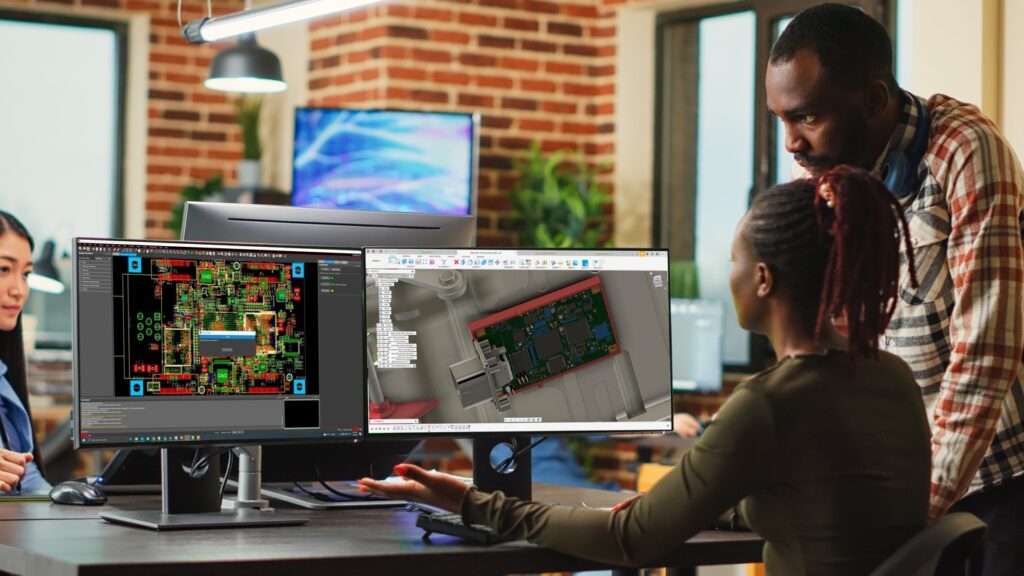& Construction

Integrated BIM tools, including Revit, AutoCAD, and Civil 3D
& Manufacturing

Professional CAD/CAM tools built on Inventor and AutoCAD
3 min read
Some steps that can help future-proof your design or manufacturing business include embracing digital transformation, investing in industry-standard tools like Autodesk Fusion, and fostering a culture of innovation in the workplace.
In today’s fast-paced and dynamic world, design and manufacturing businesses feel more volatile than ever before. Whether you’re a startup or an established company, the future is unpredictable, and you must prepare your business for whatever comes your way. Hence, in order to ensure long-term business success and survival, it’s essential to future-proof your business.

Future-proofing your business means taking steps to ensure its success in the long run, even when market conditions fluctuate, technology advances or consumer preferences shift. Especially for competitive markets like consumer products, you must take proactive steps to stay ahead of the curve and remain relevant to your target audience.
While every business is different, and there is no “one-size fits all” solution, below are some steps that almost any business could take to future-proof its operations.
Digital transformation can be thought of as the process of integrating digital technologies into all areas of your business. With more consumers shopping online, businesses must adapt to the new digital landscape or risk becoming obsolete. The digital transformation of businesses is no longer optional; it’s a necessity.
One way to embrace digital transformation for a product company is to create a digital strategy that outlines business goals and objectives and explores ways to leverage online resources to achieve these goals. For example, a business might consider investing in a new website design with an improved user interface. Another means of embracing digital transformation is to leverage social media and search engine optimization (SEO) to make your business more visible online.
To ensure that your product development lifecycle remains efficient and on par with the rest of the industry, it is important to ensure that you’re using industry-standard tools.
One such tool is Autodesk Fusion, which is an all-in-one CAD, CAM, CAE and PCB design tool that helps streamline the product development process from prototype to production. It combines industrial design, mechanical engineering, PCB design, and collaboration tools in one comprehensive package. With Fusion, you can design, test, and prototype your products in a virtual environment, reducing the time and cost associated with physical prototyping. This leads to an increase in design quality and business efficiency.

By investing in industry standard tools like Autodesk Fusion, businesses can ensure that their tools never go obsolete and that they remain on the cutting edge of the industry. Additionally, this makes it easier to attract new hires, as many people are trained on industry-standard tools.
To really ensure that your business does not risk obsolescence, it is important to stay innovative as a company. It’s often the case that the companies that survive in the long term are ones that are proactive, not reactive. This means that instead of seeing new developments from your competition and hurrying to catch up, a successful long-term business will aim to be the first to innovate and leave its competition catching up to them.
Making this happen requires fostering a culture of innovation within the company. Some ways you can foster a culture of innovation include encouraging experimentation for employees, embracing failures, and investing heavily in research and development. The most successful long-term companies are those who are willing to invest in the resources necessary for innovation and who are willing to risk failure along the way.
To ensure the long-term success of your business, it is essential to take steps towards future-proofing it. Recommended practices include embracing digital transformation, investing in industry standard tools like Autodesk Fusion, and fostering a culture of innovation in your workplace. While no one can predict the future, taking these steps can help prepare your business for whatever the future has in store.
Ready to future-proof your business?
By clicking subscribe, I agree to receive the Fusion newsletter and acknowledge the Autodesk Privacy Statement.
Success!
May we collect and use your data?
Learn more about the Third Party Services we use and our Privacy Statement.May we collect and use your data to tailor your experience?
Explore the benefits of a customized experience by managing your privacy settings for this site or visit our Privacy Statement to learn more about your options.